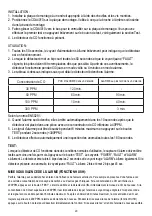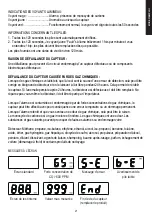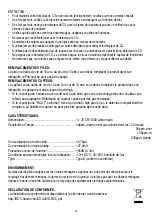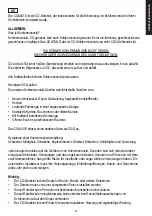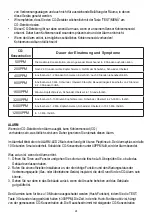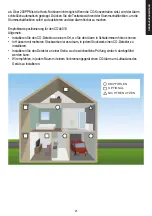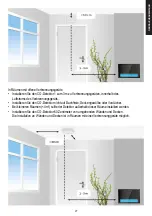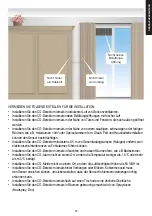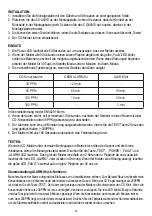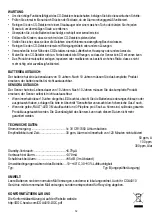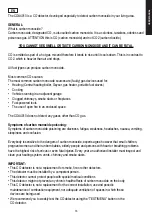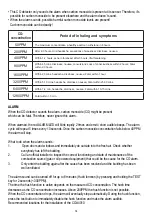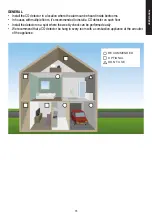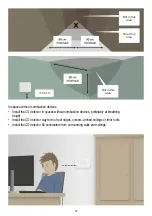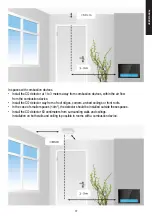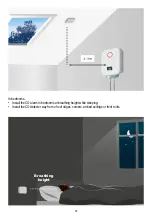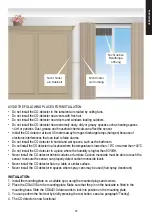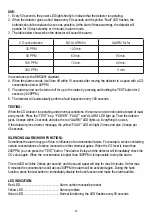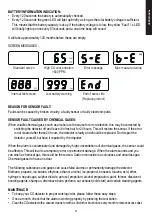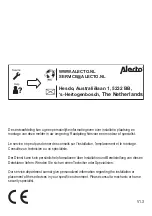
33
The COA4010 is a CO detector, developed especially to detect carbon monoxide in your living area.
GENERAL
:
What is carbon monoxide?
Carbon monoxide, designated CO, is also called carbon monoxide. It is a colorless, tasteless, odorless and
poisonous gas. ATTENTION this is CO (carbon monoxide) and not CO2 (carbon dioxide).
YOU CANNOT SEE, SMELL OR TASTE CARBON MONOXIDE AND IT CAN BE FATAL.
CO is emitted as part of a hot gas mix and therefore it tends to rise until it cools down. This is in contrast to
CO2, which is heavier than air and drops.
All fuel types can produce carbon monoxide.
Most common CO sources:
The most common carbon monoxide sources are (faulty) gas devices used for:
• Heating (Central heating boiler, Geyser, gas heater, portable fuel stoves)
• Cooking
• Vehicles running in an adjacent garage
• Clogged chimneys, smoke ducts or fireplaces
• Fuel-powered tools
• The use of open fire in an enclosed space
The COA4010 does not detect any gases other than CO gas.
Symptoms of carbon monoxide poisoning:
Symptoms of carbon monoxide poisoning are dizziness, fatigue, weakness, headaches, nausea, vomiting,
sleepiness and confusion.
Everybody is sensitive to the dangers of carbon monoxide, experts agree however that small children,
pregnant women and their unborn babies, elderly people and persons with heart or breathing problems
have the highest risk of serious or even fatal injuries. Every year an authorized installer must inspect and
clean your heating system, vents, chimney and smoke ducts.
IMPORTANT:
• This CO detector is not a replacement for smoke, fire or other detectors.
• The detector must be installed by a competent person.
• This detector cannot protect people with special medical conditions
• This detector might not prevent any chronic health effects of carbon monoxide on the body.
• This CO detector is not a replacement for the correct installation, use and periodic
maintenance of combustion equipment, nor adequate ventilation of spaces in which these
devices are being used.
• We recommend you to weekly test the CO detector using the “TEST/MENU” button on the
CO detector.
USER MANUAL
EN


